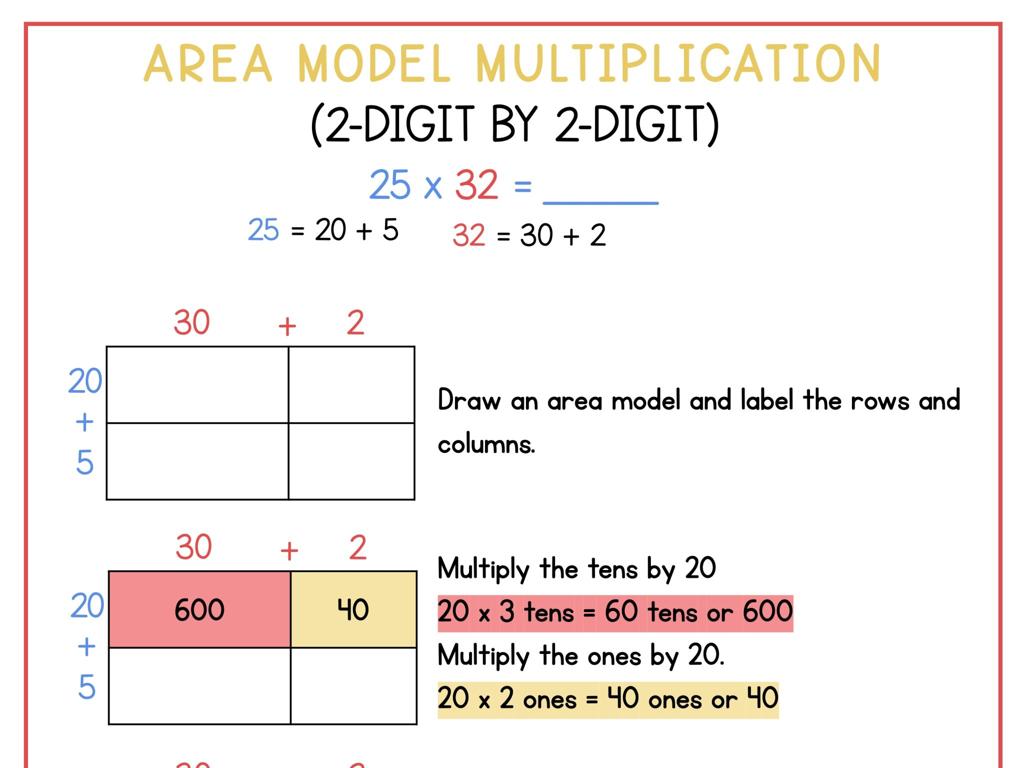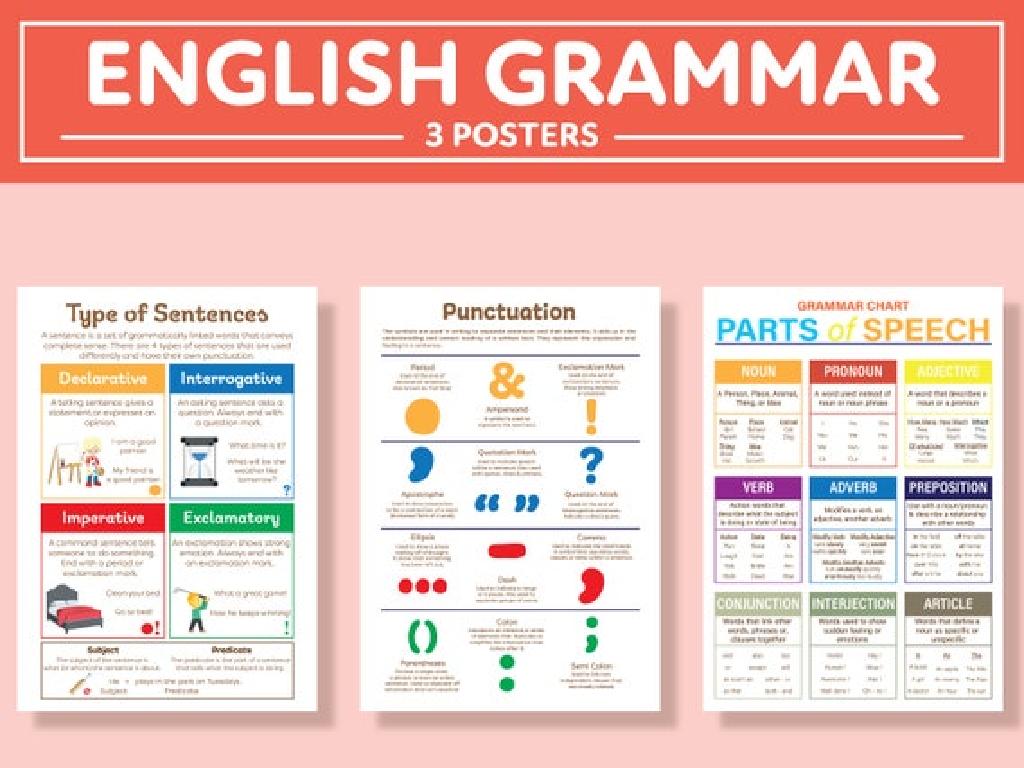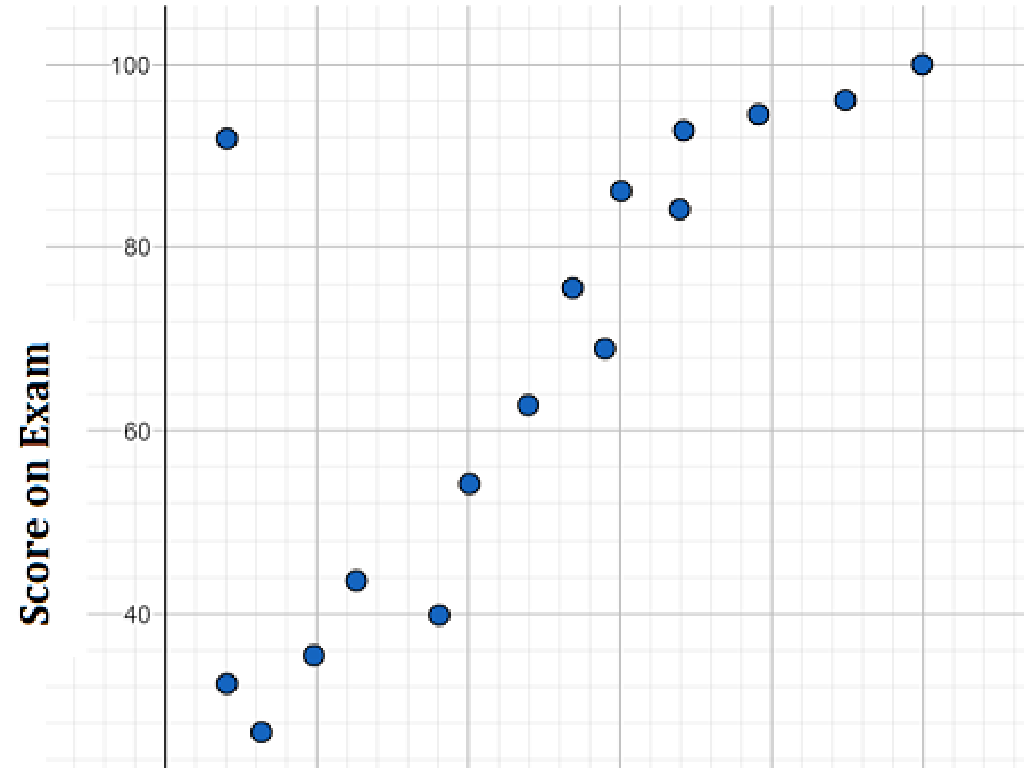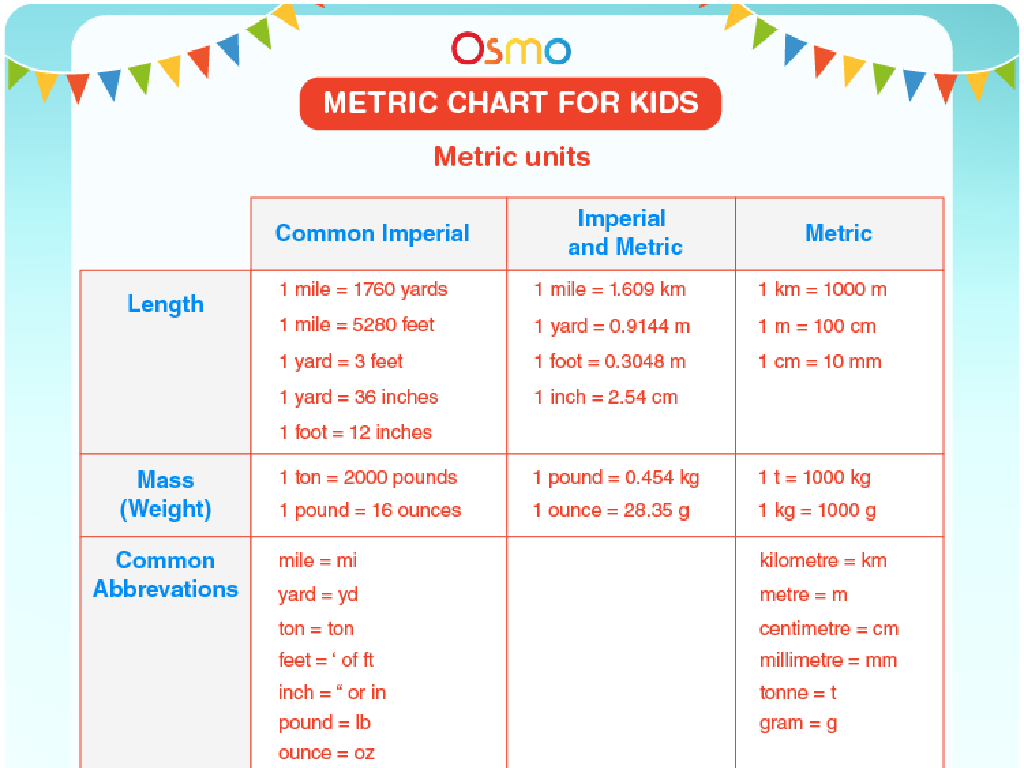Spell Rhyming Words To Answer Riddles
Subject: Language arts
Grade: Second grade
Topic: Rhyming
Please LOG IN to download the presentation. Access is available to registered users only.
View More Content
Introduction to Rhyming Words
– What is rhyming?
– Rhyming is when words have the same ending sound.
– Words with matching ending sounds
– Like ‘cat’ and ‘hat’ both end with ‘at’.
– Examples: cat-hat, pig-wig
– ‘Cat’ rhymes with ‘hat’, and ‘pig’ with ‘wig’.
– Practice finding rhymes
– We’ll play a game to find more rhyming words!
|
This slide introduces the concept of rhyming to second graders. Start by explaining that rhyming words have the same ending sounds, which makes them sound similar. Use simple, familiar examples like ‘cat’ and ‘hat’ to illustrate this point. Encourage the students to listen to the sounds at the end of the words to identify rhymes. Plan a fun activity where students can practice finding rhyming words, such as a rhyming scavenger hunt or matching game. This will help reinforce the concept and make the learning process interactive and enjoyable.
The Importance of Rhyming
– Enhances reading abilities
– Rhyming helps recognize patterns in words, aiding in reading.
– Boosts listening and speaking
– Rhyming tunes the ear to the sounds of language, improving communication skills.
– Makes learning words fun
– Engaging with rhymes makes discovering new vocabulary enjoyable.
|
This slide aims to highlight the significance of rhyming in developing early literacy skills. Rhyming is not just a playful activity but a crucial educational tool that supports the recognition of word patterns, which is essential for reading. It also sharpens listening skills and helps children distinguish between different sounds in language, contributing to better speaking abilities. Moreover, rhyming introduces new words in a fun and memorable way, encouraging a positive attitude towards learning. Teachers can elaborate on each point by giving examples of rhyming words and demonstrating how they help in reading and speaking. Additionally, incorporating rhyming games and activities in the classroom can make the learning process interactive and enjoyable.
Rhyme Time: Identifying Rhyming Words
– Listen for ending sounds
– Words rhyme when they have the same ending sound, like ‘cat’ and ‘hat’.
– Match words that sound alike
– Find pairs like ‘moon’ and ‘spoon’ that end with the same sound.
– Practice rhyming pairs
– Examples: ‘dog’ rhymes with ‘fog’, ‘hen’ with ‘pen’.
– Solve riddles with rhymes
– Use rhymes to figure out riddles, like ‘What’s a home for a dog that’s not a log?’
|
This slide is aimed at helping second graders understand the concept of rhyming words through listening and practice. Start by explaining that rhyming words have similar ending sounds. Engage the class by having them listen to words and identify rhymes. Provide examples of simple rhyming pairs and encourage students to come up with their own. Incorporate a fun activity where students solve riddles by finding the correct rhyming word, reinforcing their understanding of rhymes. For example, the answer to the riddle ‘What’s a home for a dog that’s not a log?’ is ‘dog’ and ‘fog’. This interactive approach will help students enjoy learning about rhymes and improve their phonetic skills.
Rhyming Riddles Fun
– What’s a rhyming riddle?
– It’s a puzzle with a rhyming clue to find the answer!
– Solve puzzles with rhymes
– Use the rhyme to solve the riddle
– Example: Fruit rhyming with ‘pear’
– What could it be? Yes, it’s ‘bear’!
– Think, guess, and share!
|
This slide introduces the concept of rhyming riddles to second graders, which is a fun way to engage them with rhyming words and enhance their vocabulary. Start by explaining what a rhyming riddle is, then show how to use rhyming clues to solve puzzles. Provide the example riddle about the fruit that rhymes with ‘pear’ and guide them to the answer ‘bear’. Encourage the students to think creatively and guess the answers aloud. In the next class, students can be asked to bring their own rhyming riddles to share with the class, fostering a playful and interactive learning environment.
Creating Our Rhyming Riddles
– Choose an object or animal
– Think of something fun like a ‘cat’ or a ‘hat’
– Find a rhyming word
– What sounds like ‘cat’? Maybe ‘bat’ or ‘mat’!
– Craft your riddle
– ‘I have whiskers and chase after rats, what am I?’ – A clever riddle for ‘cat’
– Get ready to share
|
This activity is designed to help students understand rhyming words and how they can be used creatively in riddles. Start by having students select an object or animal they are familiar with. Then, guide them to brainstorm words that rhyme with their chosen word. Once they have a list, they can write a simple riddle where the answer rhymes with the object or animal they selected. Encourage creativity and provide examples to inspire them. After they’ve written their riddles, prepare them to share with the class in a fun riddle guessing game. This will not only reinforce their understanding of rhymes but also enhance their speaking and listening skills.
Class Activity: Rhyming Riddle Game
– Split into pairs or groups
– Take turns with riddles
– Guess answers by rhyming
– If the riddle ends with ‘cat’, think of words that sound like ‘cat’.
– Have fun solving together
|
This interactive class activity is designed to help students practice rhyming words in a fun and engaging way. Divide the class into pairs or small groups to foster teamwork. Each group will create and solve riddles, focusing on the rhyming aspect to find the answers. For example, if the riddle is ‘I have a pet that rhymes with hat,’ students should guess ‘cat.’ Encourage students to listen carefully to the sounds of words and think of as many rhyming words as possible. This activity will enhance their phonemic awareness and ability to recognize rhyming patterns. Possible variations of the activity could include using flashcards, drawing their guesses, or even creating a rhyming word bank as a class resource.
Rhyming Words & Riddles Review
– Recap: What are rhyming words?
– Words that have the same ending sound, like ‘cat’ and ‘hat’.
– Importance of rhyming in reading
– Rhyming helps us predict and spell words, making reading fun!
– Lessons from riddle rhymes
– Solving riddles with rhymes improves our vocabulary and thinking.
– Celebrating our rhyming skills
– Let’s remember our favorite rhymes and how we solved the riddles!
|
As we conclude, let’s review the concept of rhyming words, emphasizing their role in building phonemic awareness and aiding in reading fluency. Discuss the benefits of rhyming, such as improved listening skills and the ability to make predictions while reading. Reflect on the riddles tackled during the lesson and how they helped students learn new words and enhance their problem-solving abilities. Celebrate the progress made in identifying and creating rhymes, and encourage students to continue practicing with poems, songs, and books filled with rhymes.





